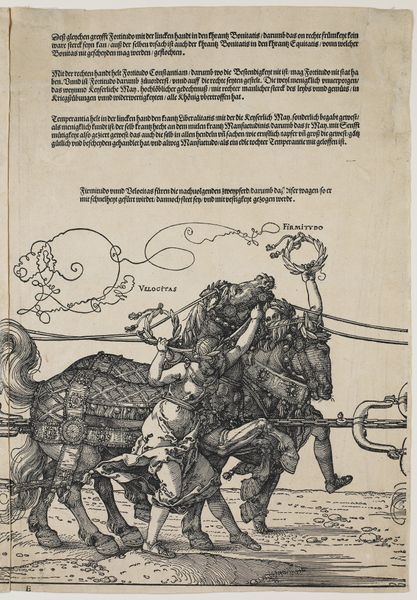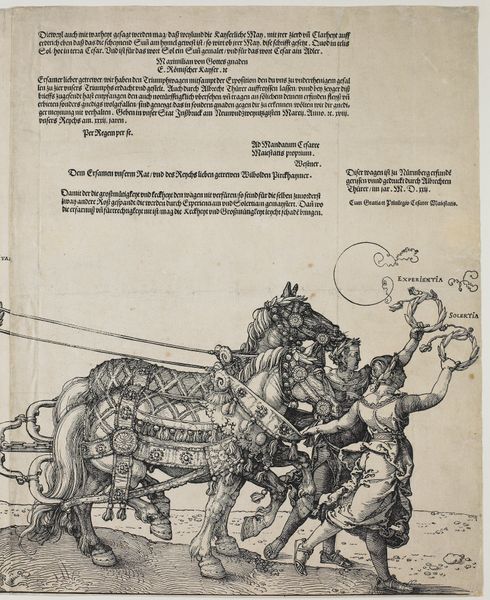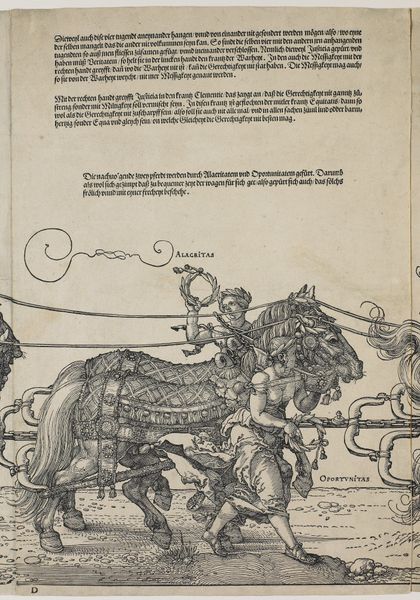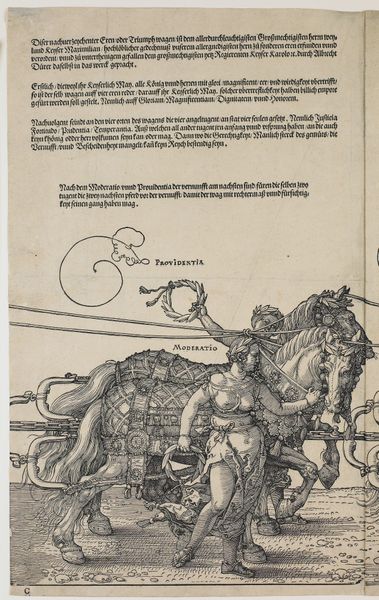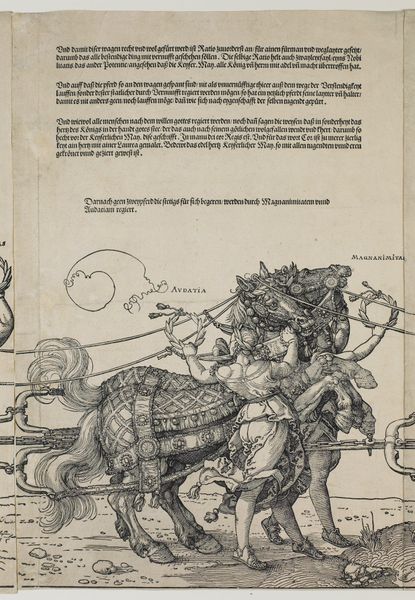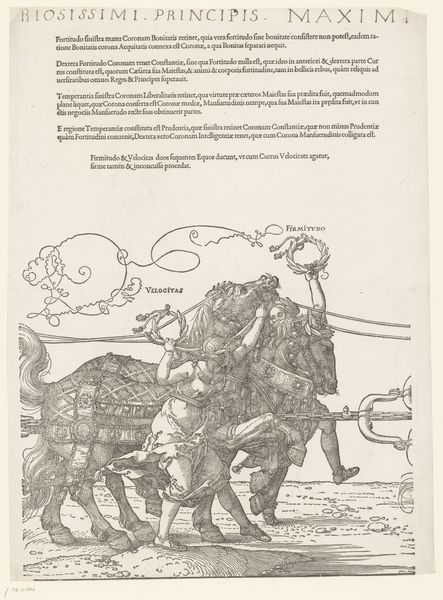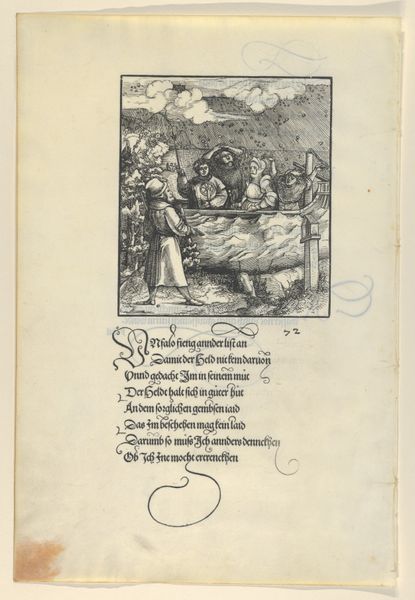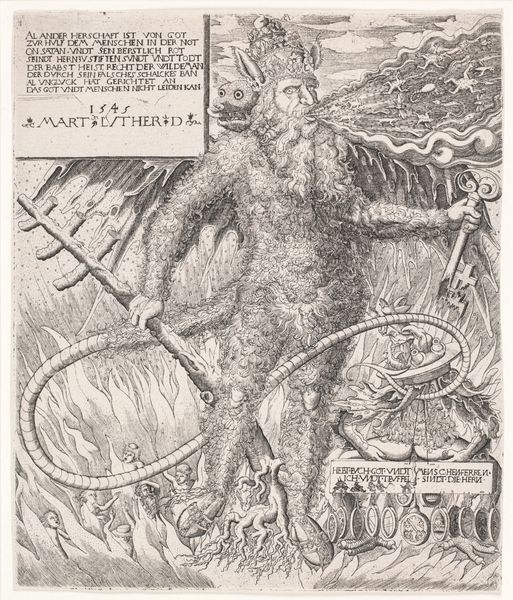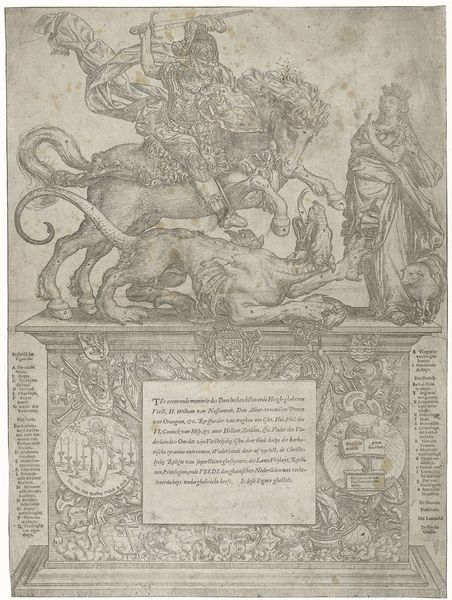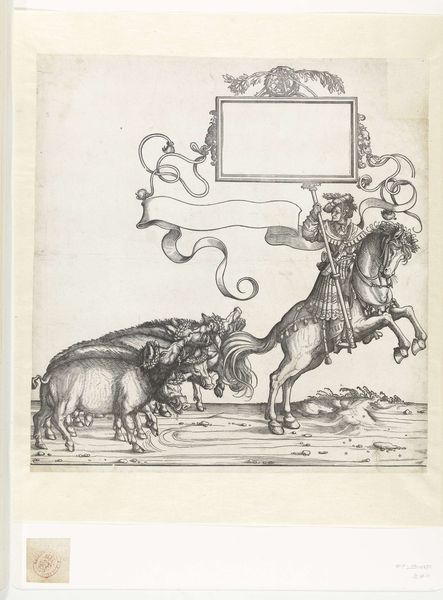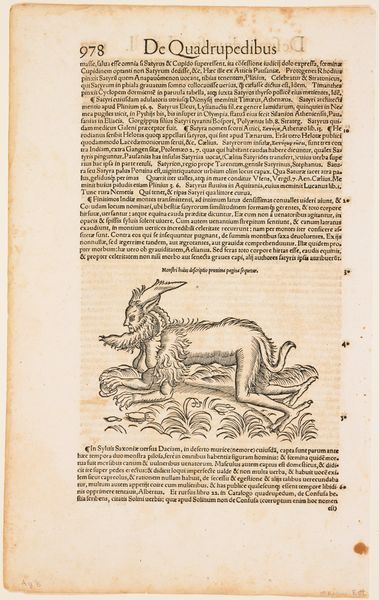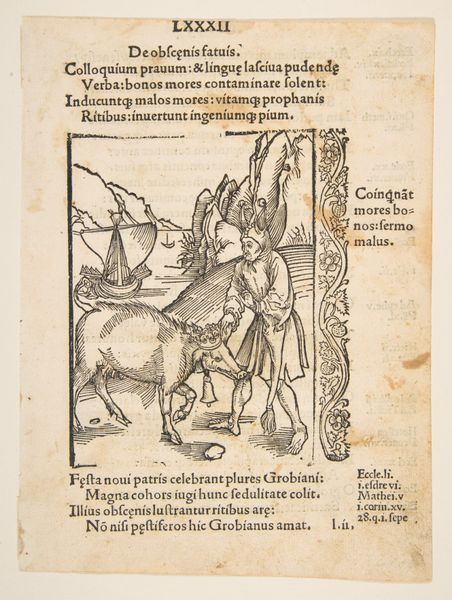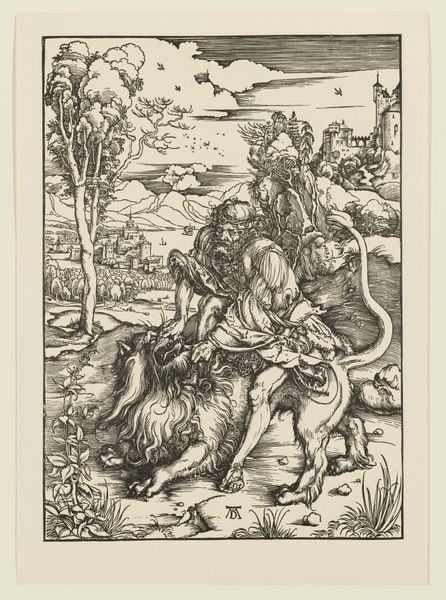
Large Triumphal Carriage of Maximilian I c. 1518 - 1522
0:00
0:00
print, woodcut
#
allegory
# print
#
landscape
#
figuration
#
woodcut
#
line
#
history-painting
#
northern-renaissance
Dimensions: 16 x 15 3/4 in. (40.64 x 40.01 cm) (sheet)
Copyright: Public Domain
This is Albrecht Dürer's "Large Triumphal Carriage of Maximilian I," an engraving made around the turn of the 16th century. Dürer, positioned as a leading artist in the Holy Roman Empire, was deeply influenced by the political climate and the Renaissance's revival of classical ideals. This print, part of a larger series commissioned by Emperor Maximilian I, operates as a powerful piece of propaganda. It’s fascinating to consider how Maximilian, through Dürer's craft, sought to construct his identity as a powerful, virtuous ruler. The figures pulling the carriage, labeled with virtues like "Acrimonia" and "Virilitas," represent the ideal characteristics of leadership during this period. These figures, depicted with classical features, evoke a sense of timeless strength and authority. The emotional impact of this work lies in its celebration of imperial power, but it also subtly reveals the constructed nature of identity and the role of art in shaping perceptions of power and virtue.
Comments
minneapolisinstituteofart almost 2 years ago
⋮
Dürer's magnificent allegorical design for the Imperial chariot was originally commissioned in 1512 as the centerpiece of Maximilian's Triumphal Procession, one of the most ambitious projects in the history of the graphic arts. Dürer's elaborately embellished carriage was intended to form the climax of the entire procession, showering the Emperor in personal glory, while underscoring his dynastic power. The final fully elaborated drawing for the woodcut was completed only in 1518, and the woodcut remained unfinished at the time of the Emperor's death in 1519. In 1522, Dürer published the Triumphal Chariot himself as an independent woodcut dedicated to the Emperors Maximilian and Charles V. The print differs from the original design in the addition of printed text explaining the various symbolism of the work and a short history of its production. Dürer also omitted the Emperor's family from the composition, for after Maximilian's death it seemed fitting to interpret his "triumph," not as a dynastic manifesto but as a personal apotheosis.
Join the conversation
Join millions of artists and users on Artera today and experience the ultimate creative platform.
